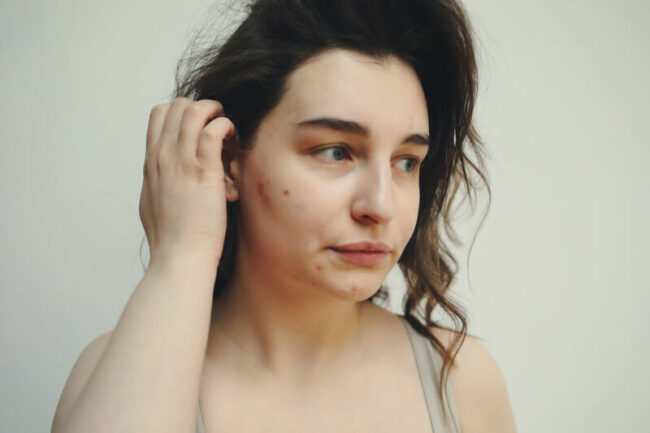Ear candling, a method involving heated beeswax cones, is often portrayed as a traditional remedy for earwax removal. However, medical experts widely regard this practice as ineffective and potentially dangerous. Despite claims linking ear candling to ancient civilizations, there is no historical evidence supporting these assertions. For instance, the Hopi Tribal Council has explicitly denied any association with this practice.
The process of ear candling seems straightforward but is scientifically dubious. A beeswax-coated cotton sheet is rolled into a cone and inserted into the ear. The opposite end is then lit. Proponents claim that the resulting vacuum draws out earwax and toxins, but this theory lacks scientific basis.
Medical professionals, including Dr. Lisa M.L. Dryer, emphasize that ear candling fails to create any significant suction. Furthermore, the concept that ear candles could remove wax contradicts the basic properties of earwax. Even Travis Berry of Wally’s Natural Products, an ear candle manufacturer, acknowledges that ear candles do not directly remove earwax but instead, purportedly aid in its natural expulsion.
Scientific studies have consistently debunked the efficacy of ear candling. Investigations reveal that the substance found inside used ear candles is not earwax but a byproduct of the candle itself. These studies also highlight that ear candling fails to produce any noticeable change in earwax within the ear.
Beyond being ineffective, ear candling poses significant health risks. In a 2007 study titled “Cerumen Impaction,” Dr. Daniel F. McCarter and colleagues found that ear candling could lead to ear canal blockages with candle wax and other complications, including burns and tympanic membrane perforation. These findings are echoed in another study from the Canadian Family Physician journal, which advises against ear candling due to its ineffectiveness and associated dangers.
Despite its popularity, ear candling is a practice surrounded by misinformation and health risks. This topic would delve into the common misconceptions about ear candling, contrasting them with scientific findings and medical advice. It would explore the risks involved, such as the potential for burns, ear infections, and the counterproductive increase in earwax due to the wax from the candles.
Effective and Safe Alternatives to Earwax Removal
With the inefficacy and risks of ear candling established, this topic would focus on safe and effective alternatives for earwax removal. Methods such as carbamide peroxide drops and baking soda solutions, which are medically recommended and easily accessible, would be explored. The topic would also provide guidance on when to seek professional medical assistance for earwax-related issues.
A deep dive into what earwax is and why our bodies produce it would offer readers a scientific perspective on this often misunderstood substance. This topic would cover the composition of earwax, its natural role in ear health, and why traditional notions like making candles from earwax are impractical, providing a comprehensive understanding of earwax’s importance in maintaining ear health.
The Efficacy of Carbamide Peroxide Ear Drops
Carbamide peroxide ear drops are widely recommended for their efficacy in softening earwax. The chemical composition of carbamide peroxide enables it to release oxygen upon contact with earwax, leading to a foaming action that softens and breaks down the wax. This mechanism makes it easier for the earwax to naturally exit the ear canal or be removed with minimal effort. It’s important to follow the specific instructions provided with these drops, as overuse or incorrect application can lead to irritation or discomfort. Additionally, these drops are contraindicated in individuals with a perforated eardrum, so it’s advisable to confirm the integrity of the eardrum before use.
Bulb Syringes for Ear Canal Rinsing
The use of bulb syringes for ear canal rinsing post-earwax softening offers a gentle yet effective method of removing softened wax. Warm water, ideally at body temperature, is used to avoid discomfort or dizziness that can occur with water that is too cold or too hot. The syringe allows for controlled water flow, reducing the risk of damage to the delicate structures of the ear. This method is particularly effective following the use of softening drops, as the combination of softening and rinsing facilitates the removal of earwax without the need for invasive procedures.
The Comprehensive Approach of Earwax Removal Kits
Earwax removal kits typically offer a comprehensive approach by combining softening agents with mechanical removal tools like bulb syringes. These kits are designed to provide a complete solution for home-based earwax removal, tailored to ensure both efficacy and safety. The kits often include detailed instructions to guide users through each step of the process. It’s important for users to follow these instructions carefully and to be aware of their own ear health conditions, as certain situations, such as the presence of ear infections or a history of ear surgeries, may necessitate professional consultation.
The Role of Pharmacists in Earwax Removal
Pharmacists play a crucial role in guiding individuals towards safe and effective earwax removal methods. They can provide valuable advice on the selection of over-the-counter products based on an individual’s specific needs and health conditions. Pharmacists can also educate customers on the proper use of these products and caution against the use of potentially harmful methods like ear candling. Their expertise is particularly beneficial for individuals who have never used earwax removal products or who have underlying ear conditions that may require special consideration.
For cases of persistent or problematic earwax, or in situations where over-the-counter methods are not suitable, consulting a healthcare professional is crucial. Medical professionals, such as general practitioners or otolaryngologists (ear, nose, and throat specialists), can safely and effectively remove earwax using specialized tools and techniques. They can also diagnose and treat any underlying conditions contributing to excessive earwax buildup, such as ear canal abnormalities or infections. Professional removal is particularly recommended for individuals with a history of ear surgery, those with a perforated eardrum, and for young children or elderly individuals who may not tolerate over-the-counter methods well.



